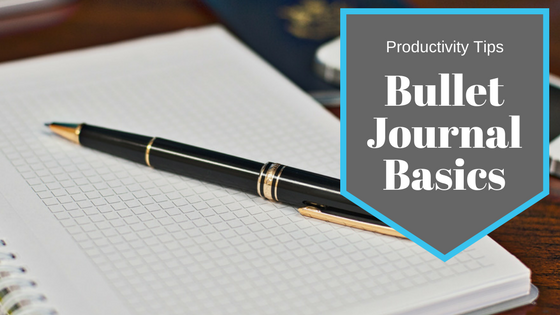I’m a planner junkie. I admit it. That’s the first step right, admitting your addiction? Well, I’m addicted.
The problem was that I could never find the “perfect” planner. That’s why I had to buy them all, because maybe, just maybe, one of the pre-printed, Instagram-perfect planners would be my planner dream. I would finally find the ever elusive “planner peace!”
Yeah. No. All I did was spend hundreds of dollars on planners which were used for less than three months and then discarded (or re-sold on Facebook Groups if possible!). It was an expensive journey with no destination.
And then I heard the magic word… BuJo.
Wait, what? It’s the nickname for Bullet Journals. Kind of sounds like a secret code for planners. And that’s not a bad thing in my book.
While bullet journals can *literally* be anything you want to make it, there is a foundation on which most are built. That system was created by Ryder Carroll, which you can find at BulletJournal.com.
Part of the brilliance of bullet journals, which many people cannot even begin to comprehend, is its simplicity. All you need is a notebook and a pen. That’s it. Yes, ANY notebook and ANY pen (or pencil if you prefer).
I love author David Allen’s quote “The brain is made for having ideas, not housing them.” Getting ideas and information onto paper as quickly and easily as possible is the purpose of the bullet journal system. It start with Rapid Logging, which has four pieces – topics, page numbers, short sentences and bullets. (By the way, everything you ever wanted to know about bullet journals and how to get started can be found at http://bulletjournal.com/get-started/).
Collections
Collections are exactly what it sounds like. It’s a collection of information related to a common topic. Collections can be any topic relevant to your life.
Starting your bullet journal is easy! When you are staring at that blank page in your notebook start with two things, the topic in the top left corner and the page number in the bottom left corner. Congratulations, you’ve created your first Collection!
And now the brain dump can begin!
Start filling that page with short objective sentences related to the topic you wrote at the top. Those sentences are going to fall into three categories – tasks, events and notes.
Tasks
What is a task? Basically anything you can do, or complete. Remember, projects are not tasks! Projects should be broken down into tasks otherwise you’ll never feel like you are accomplishing anything. We can talk later about how you can integrate projects into your bullet journal, but for now let’s just talk tasks.
Tasks get a closed dot for the bullet. Pretty simple, right? See, simplicity is key to getting things out of your head as quickly as possible.
Completed tasks get an X over that dot.
Scheduled tasks get <. Migrated tasks (meaning they got moved to the next day/week/whatever) get a >. When you complete the task then you get to finish off the X, which feels just as awesome as crossing it off the list.
Events
Events are anything that depends on a date. It can be something scheduled ahead of time, or just an event that happened that day which you want to record. It’s not something you’re going to accomplish, but more like something you will be (or were) present for. Think birthdays, milestones, conferences, meetings, etc.
Events use an open bullet, which looks like an o.
Notes
Notes are ideas, facts or anything else that is not a task or an event. Maybe it is a brilliant idea for a book (or a blog post!), a great quote you came across, or information from a business meeting.
Use a dash in front of your short sentence to mark any notes.
Next Level
If you are just starting out, start simple and use those five bullets. When you are ready to take it to the next level, start adding signifiers.
Signifiers are secondary bullets that you place in front of (to the left) of your bullets to help you identify special items in your rapid logging. Many people have created their own signifiers unique to their lives, but there are three easy ones to begin with.
An asterisk (*) for priority. These are items that MUST have your attention right away. Some people use this for their top three items to get done on that day.
An exclamation point (!) for inspiration. Make it easy to find that brilliant idea you had in the shower (that you wrote in your bullet journal right away so you wouldn’t forget it later!).
An eye for things that need you to do some investigating or discovery. Think of it as where you need to do some private “eye” investigator work.
Summary
If you’re like me and you are looking for the perfect planner, I encourage you to start trying a bullet journal. In my next blog post I’ll talk about how you can step it up and some “hacks” to make your journal exactly what you want it to be. Don’t get intimidated by all of the fancy layouts and collections you see on the bullet journal Instagram and Pinterest posts out there on the Internet. Start slowly and build to where you want to be.
I would love to hear how the bullet journal is working for you! Post a comment below, or tag me on Instagram (@heatherandthedogs) or Twitter (@heatherthedogs) when you share your progress.
